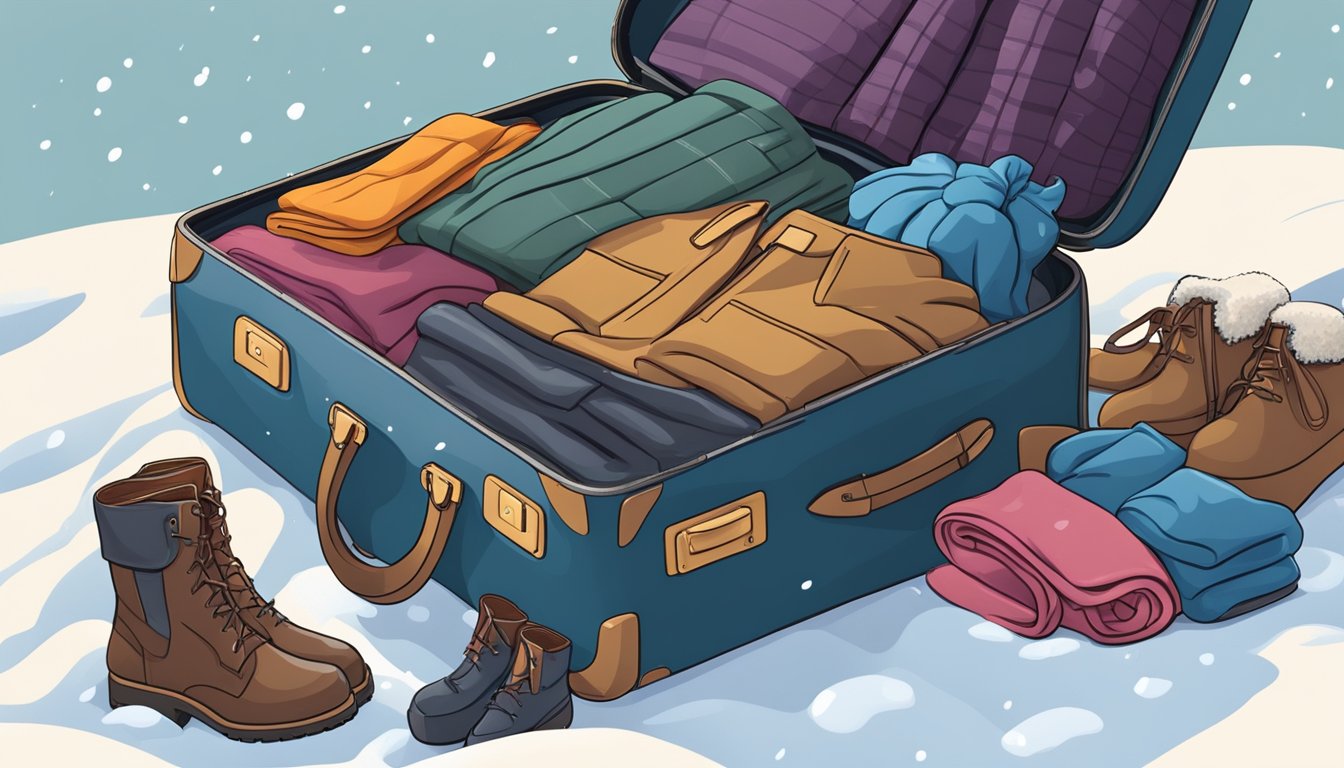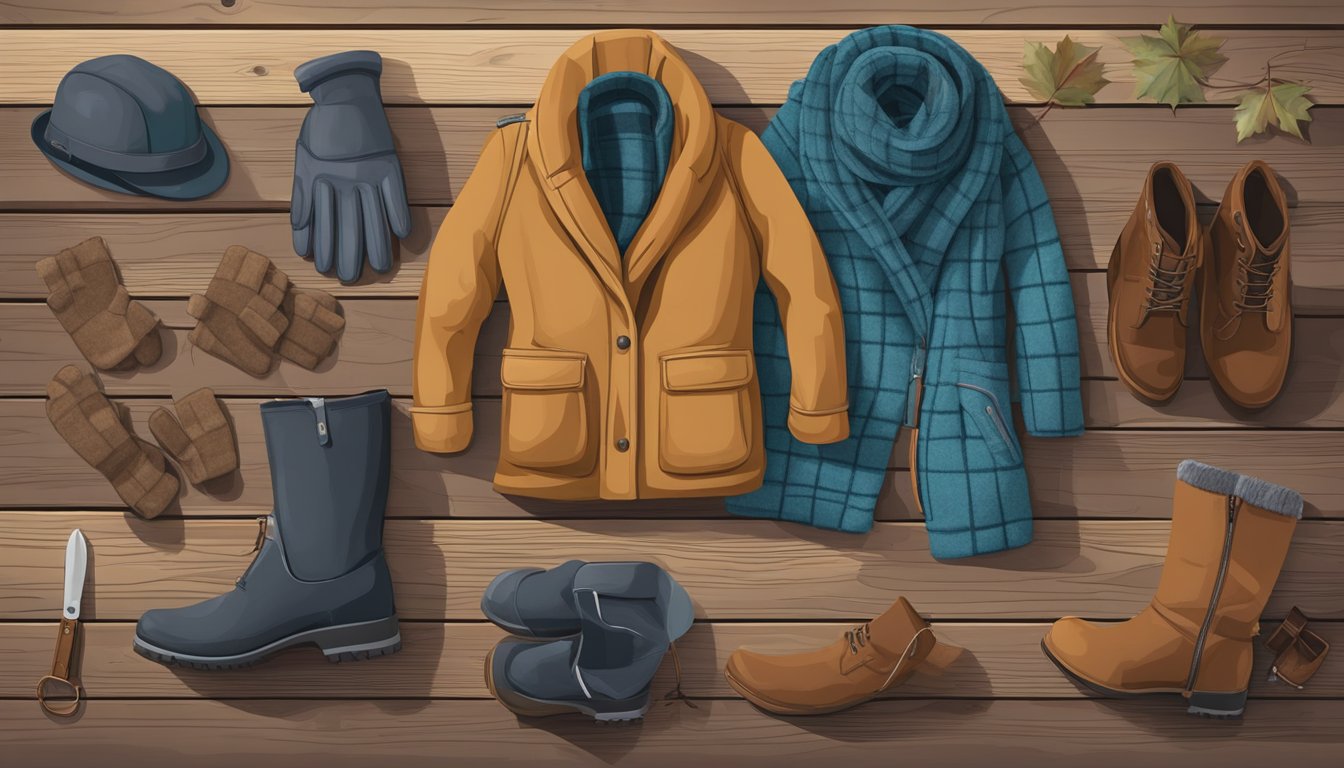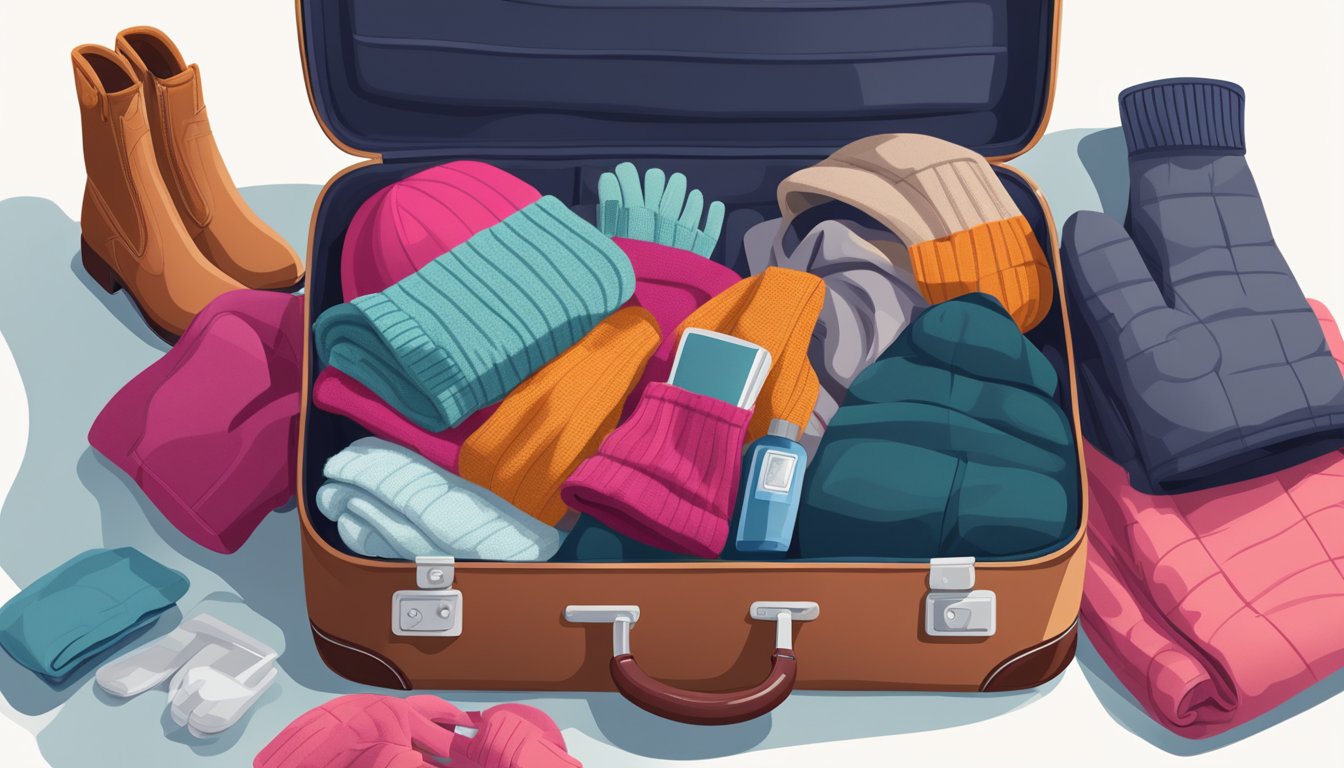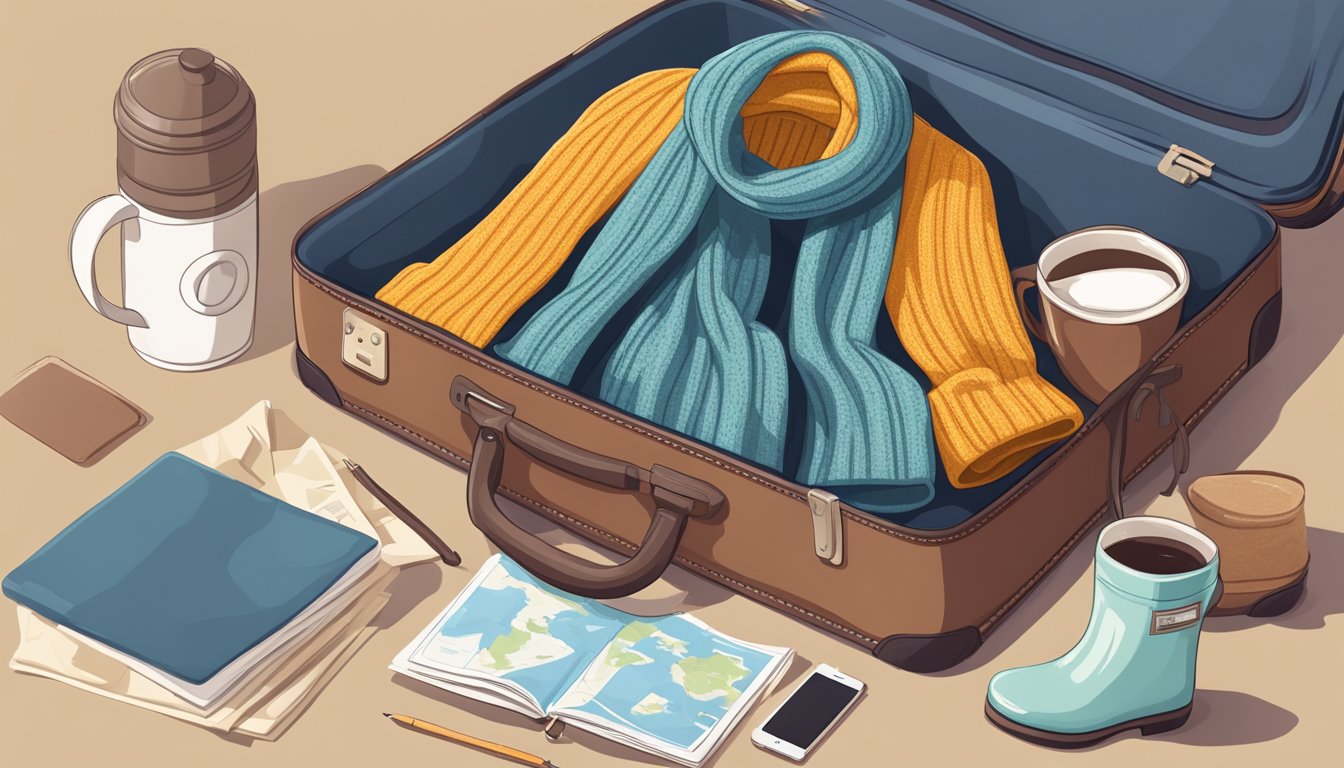Travelling to colder weather can be an exciting adventure, but it also requires some careful planning to ensure you stay warm and comfortable during your trip. One of the most important aspects of your preparation is deciding what to wear in cold weather. Whether you’re heading to a snowy mountain resort or exploring a winter wonderland city, it’s essential to have the right clothing to keep you warm and dry.

When it comes to dressing for colder weather, layering is key. This means wearing several thin layers of clothing rather than one thick layer. Not only does this keep you warmer, but it also allows you to adjust your clothing to suit the changing weather conditions. Start with a moisture-wicking base layer to keep sweat away from your body, then add a mid-layer for insulation, and finish with a waterproof outer layer to protect you from rain, snow, and wind.
Choosing the right fabrics is also important when it comes to what to wear in cold weather. Look for materials that are warm, lightweight, and breathable, such as wool, fleece, and down. Avoid cotton, which absorbs moisture and can leave you feeling damp and cold. By following these tips, you’ll be able to stay warm and comfortable during your cold weather travels, allowing you to focus on making the most of your adventure.
2 Min Read
Traveling to chilly destinations can be amazing, but packing the right clothes can be tricky. Fear not, adventurers! This quick guide will shed light on what to pack for a comfortable and stylish cold-weather adventure.
- Layering is king (or queen): Forget bulky clothes. Instead, pack thin layers you can add or remove as needed. This lets you adjust to changing temperatures and avoid overheating. Start with a moisture-wicking base layer, then add a warm, insulating mid-layer. Top it all off with a waterproof outer shell to shield you from wind, rain, or snow.
- Material matters: Focus on warm, lightweight, and breathable fabrics like wool, fleece, and down. Avoid cotton, as it traps sweat and leaves you feeling damp and cold.
- Know your destination: Research the climate of your destination. Is it snowy, mild, or somewhere in between? Pack accordingly. Don’t forget to check the forecast for potential surprises!
Bonus Tip: Pack versatile pieces in neutral tones. They’ll mix and match easily, creating more outfit options without overloading your suitcase.
With these quick tips, you’ll be well on your way to conquering the cold in style!
Understanding the Climate

When traveling to colder weather, it’s important to understand the climate patterns of your destination. This will help you pack the right clothing and gear for your trip. In this section, we’ll look at two important factors to consider: weather patterns and destination research.
Weather Patterns
Before you start packing, it’s important to understand the weather patterns of your destination. This will help you determine what type of clothing and gear you need to pack. For example, if you’re traveling to a destination that experiences heavy snowfall, you’ll need to pack warm, waterproof boots and a heavy-duty coat. On the other hand, if you’re traveling to a destination that experiences milder winter weather, you may be able to get away with lighter clothing and footwear.
Destination Research
Researching your destination is key to understanding the climate patterns. Look up the average temperature and precipitation for the time of year you’ll be traveling. This will give you a good idea of what to expect and what to pack. You can also research the local weather patterns to get a better understanding of what the weather will be like during your trip.
For example, if you’re traveling to Japan in December, you can expect colder weather with temperatures that don’t usually drop below 0°C, but it’s still a good idea to bring a thick coat and warm clothes if you’re traveling. Similarly, if you’re traveling to Singapore during their fall or winter season, you can expect temperatures to be around 77 degrees Fahrenheit, so you won’t need to pack heavy winter clothing.
By understanding the climate patterns of your destination and doing some research, you can ensure that you pack the right clothing and gear for your trip. This will help you stay comfortable and enjoy your travels to colder weather.
Essentials of Layering

When travelling to colder weather, layering is key to staying warm and comfortable. Layering involves wearing multiple layers of clothing that can be added or removed as needed, depending on the temperature and activity level. This allows you to regulate your body temperature and stay warm without overheating.
Base Layers
The base layer is the layer closest to your skin and is responsible for wicking away moisture and keeping you dry. Merino wool is a popular material for base layers as it is soft, lightweight, and naturally moisture-wicking. It also has anti-microbial properties that help prevent odour buildup. Synthetic materials like polyester and nylon are also good options for base layers as they are quick-drying and durable.
Mid Layers
The mid layer provides insulation and helps trap heat close to your body. Fleece is a popular material for mid layers as it is soft, lightweight, and provides excellent insulation. It is also breathable and dries quickly, making it a great choice for active outdoor activities. Synthetic insulation like PrimaLoft is also a good option for mid layers as it is lightweight, compressible, and provides excellent warmth without adding bulk.
Outer Layers
The outer layer is the layer that protects you from wind, rain, and snow. It should be waterproof and breathable to keep you dry and comfortable. Gore-Tex is a popular material for outer layers as it is waterproof, windproof, and breathable. It is also lightweight and durable, making it a great choice for outdoor activities. Other materials like nylon and polyester can also be used for outer layers as they are lightweight and water-resistant.
Key Clothing Items

When it comes to travelling to colder weather, it’s essential to pack the right clothing items to keep warm and stylish. Here are some key essentials to consider:
Sweaters and Cardigans
Sweaters and cardigans are your best friends in cold weather. Opt for thick, cosy knits in neutral tones that can easily be mixed and matched with your other travel items. Merino wool sweaters are a great choice as they are lightweight, breathable, and provide excellent insulation.
Leggings and Jeans
For bottom wear, pack a combination of warm leggings and jeans. Merino wool leggings are ideal for layering under trousers or wearing on their own for extra warmth. A pair of well-fitted jeans will be versatile and can be dressed up or down for different occasions.
Outerwear Choices
Invest in a good quality coat or jacket that is both stylish and functional. Look for options that are waterproof, windproof, and insulated to protect you from the elements. A classic trench coat or a padded parka are great choices for cold weather travel.
Footwear Fundamentals
Ankle boots are a must-have for colder climates. They are versatile, comfortable, and provide the right amount of warmth and support for walking in various terrains. Additionally, pack a pair of warm boots with good traction to keep your feet dry and toasty in snowy or wet conditions.
Remember, the key to staying warm and comfortable in colder weather is to layer your clothing and invest in high-quality, versatile pieces that can be mixed and matched for different outfits.
Accessorizing for Warmth and Style

When you’re travelling to colder weather, it’s important to pack the right accessories to keep you warm and stylish. Here are some tips on how to accessorize for warmth and style.
Hats and Gloves
A warm hat and gloves are essential for keeping your head and hands warm in cold weather. Look for hats made from wool or fleece, and choose gloves that are lined with a warm material like Thinsulate. You can also opt for touch screen gloves, which allow you to use your phone without taking your gloves off.
Scarves and Neck Gaiters
Scarves and neck gaiters are great for keeping your neck and face warm in cold weather. Look for scarves made from wool or cashmere, and choose a neck gaiter made from a breathable fabric like merino wool. You can also opt for a neck gaiter with a built-in face mask for added warmth and protection.
Winter Accessories
Winter accessories like earmuffs, headbands, and leg warmers can also help keep you warm and stylish in cold weather. Look for earmuffs made from faux fur or fleece, and choose a headband made from a warm material like wool. Leg warmers are also a great way to add warmth and style to your outfit.
Remember to also pack sunglasses and sunscreen, as the sun can still be strong in cold weather. With the right accessories, you can stay warm and stylish no matter how cold it gets.
Pro Tip: Hand Warmers for Long Outdoor Activities!
Planning to be outdoors for extended periods in frosty weather? Don’t forget hand warmers! These lifesavers generate warmth for hours, keeping your hands toasty and comfortable, allowing you to explore for longer and enjoy the winter wonderland without numb fingers.
Packing Smart

When you’re travelling to colder weather, it’s important to pack smart so that you can stay warm and comfortable without overpacking. Here are some tips to help you pack efficiently and effectively.
Creating a Packing List
Before you start packing, create a packing list to help you stay organised. This will ensure that you don’t forget any essential items and will also help you avoid overpacking. Make sure to include items such as warm clothing, thermal underwear, gloves, hats, scarves, and a waterproof coat.
Maximising Limited Luggage Space
When you’re travelling to colder weather, you may have limited luggage space, so it’s important to maximise the space you have. One way to do this is to roll your clothes instead of folding them. This will help to save space and will also help to prevent wrinkles.
Another way to maximise limited luggage space is to wear your bulkiest items on the plane. For example, wear your winter coat, boots, and hat on the plane so that they don’t take up too much space in your suitcase.
Carry-on Essentials
When you’re travelling to colder weather, it’s important to pack some carry-on essentials in case your luggage gets lost or delayed. Make sure to pack a change of clothes, a warm jacket, and any important medications or documents in your carry-on bag.
By following these packing tips and creating a packing list, you can ensure that you have everything you need for your trip without overpacking. With a little bit of planning and organisation, you can travel to colder weather with ease and comfort.
Special Considerations

When travelling to colder weather, there are a few special considerations you should keep in mind to make your trip comfortable and enjoyable. Here are some tips to help you prepare for your trip:
Snow Sports Gear
If you’re planning on participating in snow sports like snowshoeing or skiing, you’ll need to pack some specific gear. Ski pants are a must-have to keep you warm and dry while on the slopes. Look for pants that are waterproof and insulated, and that have reinforced cuffs to prevent tearing from ski edges. You may also want to consider a helmet to protect your head from falls and collisions.
Fashionable Travel Wardrobe
Just because you’re travelling to colder weather doesn’t mean you can’t look fashionable. When packing your travel wardrobe, focus on layering pieces that can be mixed and matched to create different outfits. A statement jacket is a great way to add some flair to your outfit while keeping you warm. Look for jackets that are both stylish and functional, with features like a hood, pockets, and insulation.
When it comes to footwear, opt for boots that are both warm and comfortable. Look for boots that are waterproof and have good traction to prevent slips and falls on icy surfaces. And don’t forget to pack some warm accessories like scarves, gloves, and hats to complete your look.
Health and Comfort

Travelling to colder weather can be a fun and exciting experience, but it’s important to protect your skin and stay comfortable indoors. Here are some tips to help you stay healthy and comfortable during your trip.
Protecting Your Skin
When you’re travelling to colder weather, it’s important to protect your skin from the harsh elements. The cold weather and wind can be very drying, which can lead to chapped lips and dry skin. To keep your skin healthy, make sure to bring a good quality lip balm and moisturiser with you. Look for products that contain natural ingredients like shea butter, coconut oil, or beeswax.
Another important thing to remember is to wear sunscreen, even in the winter. The sun’s rays can still be damaging to your skin, even on cloudy days. Look for a broad-spectrum sunscreen with an SPF of at least 30, and apply it to any exposed skin before you go outside.
Staying Comfortable Indoors
When you’re indoors in colder weather, it’s important to stay warm and comfortable. Layers are key to staying warm, so make sure to pack plenty of sweaters, long-sleeved shirts, and thermal underwear. You can also wear a hat and gloves to keep your head and hands warm.
If you’re staying in a hotel or rental property, make sure to check the heating system before you arrive. You don’t want to be stuck in a cold room with no way to warm up. If you’re travelling to a very cold destination, consider bringing a portable space heater with you.
Travel Tips for Cold-Weather Destinations

Travelling to a cold-weather destination can be an exciting adventure, but it also requires careful planning to ensure you stay warm and comfortable throughout your trip. Here are some essential travel tips to help you navigate airports and transfers, as well as understand the local customs and etiquette.
Navigating Airports and Transfers
When travelling to a cold-weather destination, it’s crucial to wear a suitable outfit for the journey. Opt for layers, including a warm coat, thermal clothing, and insulated footwear. This will keep you cosy during your flight and any outdoor transfers.
Be sure to check the weather forecast for your destination and any layover locations. This will help you prepare for any sudden changes in temperature and ensure you’re dressed appropriately at all times.
Local Customs and Etiquette
Before embarking on your winter vacation, familiarise yourself with the local customs and etiquette of your destination. Some cultures may have specific dress codes or traditions related to cold-weather attire, so it’s essential to respect and adhere to these practices.
In some regions, removing your shoes before entering a home or certain indoor spaces is customary. Additionally, understanding how to greet locals and the appropriate gestures for showing gratitude can enhance your travel experience and foster positive interactions with the community.
Frequently Asked Questions
What essentials should I pack for a trip to a wintry destination?
When packing for a cold-weather trip, it’s important to have the right essentials to stay warm and comfortable. These essentials include:
- Thermal underwear
- Warm socks
- Insulated jacket
- Waterproof boots
- Scarf, hat, and gloves
How should I layer my clothes for a journey to a chilly climate?
Layering is key when it comes to staying warm in cold weather. Start with a base layer of thermal underwear, add a mid-layer for insulation, and finish with an outer layer to protect against wind and water. Don’t forget to add accessories like a scarf, hat, and gloves to keep extremities warm.
What are the top clothing items to keep warm in sub-zero temperatures?
If you’re traveling to an extremely cold destination, it’s important to have the right clothing items to keep warm. These include:
- Down jacket
- Insulated pants
- Fleece-lined leggings
- Wool sweater
- Snow boots with a thick sole
Could you suggest the best attire for a comfortable cold-weather flight?
When flying to a cold destination, it’s important to dress comfortably while still staying warm. Opt for loose-fitting, breathable clothing like leggings and a sweater. Wear a warm jacket and bring a scarf, hat, and gloves to stay cozy on the flight.
What should one consider when choosing outfits for transitioning from a hot to a freezing environment?
If you’re traveling from a hot to a cold destination, it’s important to consider the temperature difference and plan accordingly. Layering is key, so pack lightweight clothing that can be worn together for warmth. Be sure to bring a warm jacket, scarf, hat, and gloves to stay comfortable in the cold weather.
What are the must-have accessories for maintaining warmth in frosty weather conditions?
Accessories are essential for maintaining warmth in cold weather. Be sure to pack a warm scarf, hat, and gloves to protect against the cold. A pair of warm, waterproof boots will also keep your feet dry and comfortable in frosty conditions.
Applying for Loans Just Got Easier with Quick Credit
Do rising everyday expenses leave you feeling strapped? Perhaps you’re dreaming of a getaway or the latest tech. Whatever your reason, a personal loan can bridge the gap.
Quick Credit, a reputable Jurong moneylender, streamlines the application process. In just minutes, you can apply for a personal loan online.
Here’s what you’ll need:
- NRIC/Work Pass
- Recent payslips (past 3 months)
- CPF Contribution Statements
- Proof of Address
Take control of your finances today. Eliminate the stress of unexpected bills with a Quick Credit loan. Apply online now!
